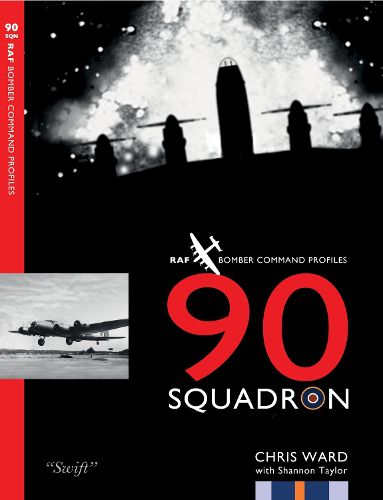Readings Newsletter
Become a Readings Member to make your shopping experience even easier.
Sign in or sign up for free!
You’re not far away from qualifying for FREE standard shipping within Australia
You’ve qualified for FREE standard shipping within Australia
The cart is loading…






When the USAAF gifted the RAF twenty obsolete B17C Fortresses in early 1941, they did so on the understanding that they were not operationally fit for purpose and should be used only to gain experience on the type in the expectation of an order being placed for the B17E variant. The RAF had other ideas, however, and decided to employ them as high altitude daylight bombers that could operate beyond the service ceiling of German fighters. On the 7th of May 1941, 90 Squadron was reformed at Watton as part of 2 Group, which itself was something of an anomaly in a largely nocturnal Bomber Command. The Americans were proved to be right as the B17C, or Fortress I as it was known to the RAF, was beset with servicing issues and technical malfunctions but began operations in July with limited success. It proved capable of reaching heights of up to 32,000 feet, but enemy fighters were still just able to reach it. The formation of condensation trails advertised its presence from miles away to alert the German defences, a problem for which there was no solution. From September 1941until disbandment in February 1942, the Squadron was in a state of limbo, still flying the Fortress but not operationally and most examples of the type ended up in the Middle East. The squadron was reformed in 3 Group in November 1942 to operate Stirlings, during which period it occasionally supported SOE operations but focused mostly on mining and bombing operations in the occupied countries. Once the squadron converted to Lancasters in the summer of 1944, it was able to resume operations over Germany and remain at the forefront of operations, from October 1944 employing 3 Group's G-H bombing system against railways, oil refineries factories and shipyards. This is the operational record of an unorthodox unit within RAF Bomber Command, its crews exhibiting every bit as much bravery and enduring the same hardships as their peers in other units.
$9.00 standard shipping within Australia
FREE standard shipping within Australia for orders over $100.00
Express & International shipping calculated at checkout
When the USAAF gifted the RAF twenty obsolete B17C Fortresses in early 1941, they did so on the understanding that they were not operationally fit for purpose and should be used only to gain experience on the type in the expectation of an order being placed for the B17E variant. The RAF had other ideas, however, and decided to employ them as high altitude daylight bombers that could operate beyond the service ceiling of German fighters. On the 7th of May 1941, 90 Squadron was reformed at Watton as part of 2 Group, which itself was something of an anomaly in a largely nocturnal Bomber Command. The Americans were proved to be right as the B17C, or Fortress I as it was known to the RAF, was beset with servicing issues and technical malfunctions but began operations in July with limited success. It proved capable of reaching heights of up to 32,000 feet, but enemy fighters were still just able to reach it. The formation of condensation trails advertised its presence from miles away to alert the German defences, a problem for which there was no solution. From September 1941until disbandment in February 1942, the Squadron was in a state of limbo, still flying the Fortress but not operationally and most examples of the type ended up in the Middle East. The squadron was reformed in 3 Group in November 1942 to operate Stirlings, during which period it occasionally supported SOE operations but focused mostly on mining and bombing operations in the occupied countries. Once the squadron converted to Lancasters in the summer of 1944, it was able to resume operations over Germany and remain at the forefront of operations, from October 1944 employing 3 Group's G-H bombing system against railways, oil refineries factories and shipyards. This is the operational record of an unorthodox unit within RAF Bomber Command, its crews exhibiting every bit as much bravery and enduring the same hardships as their peers in other units.